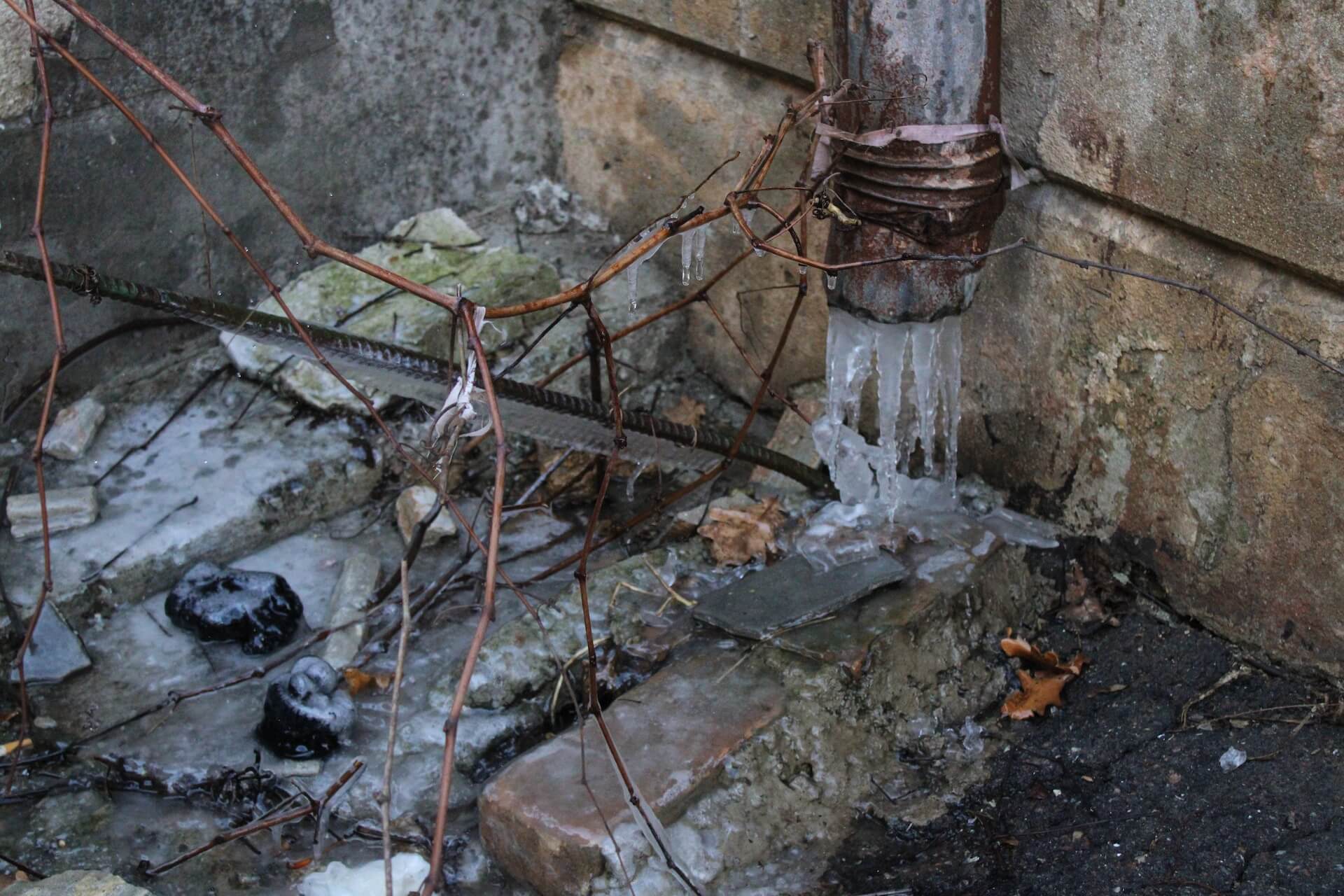As winter brings frosty temperatures to Cincinnati and Northern Kentucky, homeowners often grapple with a common yet potentially destructive issue — frozen pipes in houses. The cold in this region can wreak havoc on plumbing systems, leading to burst pipes and costly damages. Fortunately, local experts like Jolly Plumbing, Drains, Heating, and Air are here to help you navigate these icy challenges.
Understanding Frozen Pipes
In Cincinnati, the winter weather sees a daily average high temperature hovering around 44°F, seldom plummeting below 24°F or escalating above 64°F. Nightly lows generally sit at 28°F, rarely below 8°F or above 46°F. Besides water outside freezing, these chilly temperatures can also cause water sitting in pipes to freeze.
Freezing happens when the water inside the pipes begins to cool, and the water temperature drops to the freezing point or below, causing the formation of ice. In an ideal scenario, frozen pipes might thaw out on their own as outdoor temperatures rise. However, thawing could take an extended period, depending on the severity and duration of freezing temperatures.
Signs of Frozen Pipes
Recognizing the signs of frozen pipes is vital for early intervention. Look out for the following:
- Unexpected Changes in Water Flow: If you turn on your faucet and only a trickle comes out (or nothing at all), your pipes are likely frozen.
- Visible Frost on Pipes: If you can see your pipes, such as those under sinks, you might detect frost accumulation on the exterior.
- Unpleasant Smells: The only way odor can escape if a pipe is blocked or backed up in the direction of your property.
- Water Damage: If a pipe has burst due to freezing, you may notice water damage in your home, such as wet walls, ceilings, or floors.
Preventive Measures Against Frozen Pipes
Here are some tips to help you prepare your home for the harsh winter and ensure that your pipes remain unfrozen:
- Insulate Your Pipes: Insulation is a cost-effective method that keeps the pipes warm and prevents freezing.
- Keep Your Faucets Dripping: The constant flow of water reduces the chances of water standing still long enough to freeze.
- Seal Off Drafts: Seal all cracks and openings around your windows, doors, and sill plates to keep the cold air out.
- Maintain a Consistent Temperature: Keep your thermostat at the same temperature day and night.
- Open Cabinet Doors: This tip will allow warmer air to circulate the plumbing, reducing the likelihood of freezing.
- Schedule Professional Inspections: Regular maintenance and inspections by professionals, such as Jolly Plumbing, are crucial in ensuring the optimum functioning of your plumbing system and warding off potential disasters.
Tools and Supplies
Some essential items you will need for DIY prevention include the following:
- Heat Tape: You can wrap heat tape around exposed pipes to apply direct warmth, preventing freezing.
- Fiberglass or Foam Rubber Pipe Insulation: These materials are excellent for insulating exposed pipes, especially in basements or attics.
- Heaters: Space heaters can be helpful during severe cold weather, especially if you spot a frozen pipe.
- Breathing and Eye Protection: When using heat sources to thaw frozen pipes, have a face mask and safety goggles to protect yourself from potential hazards.
- Bucket, Mops, and Towels: In case a pipe bursts, having these items on hand will help you promptly clean up any water damage.
Thawing Frozen Pipes Safely
When you realize you have a frozen pipe in your house, swift and safe action is essential to mitigate potential damage. Here’s a step-by-step guide on how to safely thaw frozen pipes in your house:
- Step 1: Identify the Frozen Pipe. The first step in thawing a frozen pipe is to find which pipe or pipes are frozen.
- Step 2: Locate the Blockage. Once you’ve identified the affected pipe, start from the area of the pipe closest to the faucet, then follow the pipe back from there until you find the section that’s frozen.
- Step 3: Open the Faucet. Before you begin thawing, open both the hot and cold handles of the faucet that the pipe feeds into.
- Step 4: Apply Heat. You could use a hair dryer, a heat lamp, a portable space heater, or hot towels. Apply heat slowly and evenly to prevent the pipe from bursting due to rapid temperature changes.
- Step 5: Check All Faucets in Your Home. If one pipe is frozen, others might be as well.
The time it takes for pipes to unfreeze can vary greatly depending on the length, location, and level of insulation of the pipe, as well as the severity of the freeze. However, a frozen pipe can generally start to thaw within 30 minutes to an hour.
When To Call a Professional
Thawing frozen pipes is delicate and can lead to even more significant complications if not conducted properly. While DIY methods suit minor freezes, certain situations demand professional intervention. Call experts like Jolly Plumbing if:
- You can’t locate the frozen area.
- The frozen area is not accessible.
- A large section of your plumbing system is frozen.
- A pipe has burst.
- Your DIY thawing efforts prove futile.
Immediate Action for Frozen Pipes
If you find frozen pipes in your house, take immediate action. Some steps to take include:
- Shut Off the Water Supply: This step can prevent water from reaching the ice blockage area, reducing the pressure on the pipes and decreasing the chances of a burst pipe.
- Open the Faucet: Opening the faucet allows steam to escape and water to flow as the ice melts, further reducing the pressure.
- Apply Safe Heat: Start applying heat to the frozen pipe area, if accessible, using any of the safe methods mentioned above.
Contact Jolly Plumbing emergency services at (859) 287-4542 for Kentucky areas or (513) 427-0929 for Ohio.
Conclusion
Tackling frozen pipes in your home requires a combination of understanding, preventive measures, and swift action. Local experts like Jolly Plumbing stand ready to assist Cincinnati and Northern Kentucky residents, providing prompt and reliable solutions to safeguard homes from the winter chill. Stay warm, and keep those pipes thawed!



